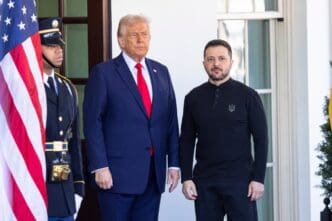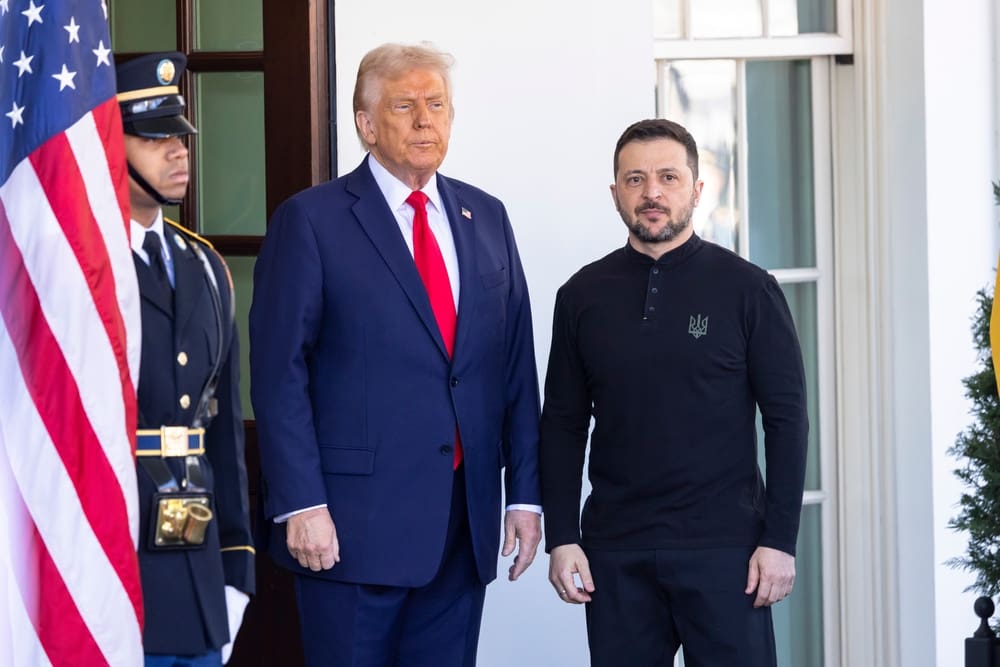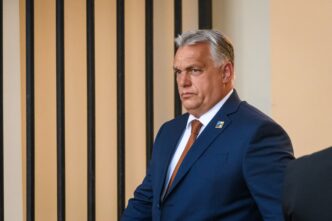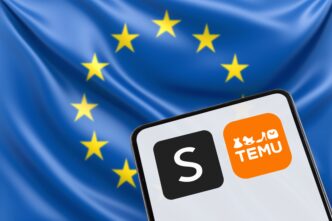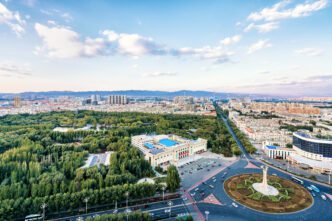Executive Summary
The Story So Far
Why This Matters
Who Thinks What?
Ukrainian President Volodymyr Zelensky visited the White House on Monday for discussions with President Donald Trump and a group of European leaders, marking a significant diplomatic push to end the ongoing conflict with Russia. The meetings, which followed a recent summit between President Trump and Russian President Vladimir Putin, offered what some observers described as tantalizing glimpses of potential progress, despite underlying complexities and challenges.
The atmosphere during President Zelensky’s visit was notably positive, with European leaders presenting a unified front in support of Ukraine. Chancellor Friedrich Merz of Germany and President Alexander Stubb of Finland were among those who sought to reinforce a political and emotional rationale for President Trump to maintain his support for Ukraine. Finnish President Stubb remarked that more progress had been made in the preceding two weeks than in the past three and a half years of the conflict.
Following the White House meetings, Trump indicated on social media a potential for a three-way summit involving himself, President Zelensky, and President Putin, possibly preceded by a one-on-one meeting between the Ukrainian and Russian leaders. This suggested an acceleration of diplomatic momentum, with German Chancellor Merz hinting such a meeting could occur within two weeks.
Challenges to Peace
Despite the optimistic tone, the discussions also highlighted significant obstacles to a lasting peace agreement. A key challenge revolves around the nature of security guarantees for Ukraine. Italian Prime Minister Giorgia Meloni proposed a model for Western nations to offer guarantees similar to NATO’s Article 5 mutual defense pledge, but outside formal alliance structures. However, it remains unclear how Russia, which is fighting to prevent Ukraine’s NATO aspirations, would accept an arrangement that grants Kyiv a pseudo-alliance status.
Another contentious issue is the concept of “land swaps.” The term, a buzzword in the nascent peace process, refers to Ukraine potentially ceding parts of its territory in exchange for other areas. Officials briefed on Trump’s summit with Putin indicated that the Russian leader seeks to legitimize territorial gains through negotiation, including in the Donbas region. Such arrangements would force difficult choices for President Zelensky and could lead to significant population displacement.
Analysts have expressed skepticism regarding the substance of the current diplomatic efforts. John Bolton, a former Trump first-term national security adviser, characterized the focus on meetings as underscoring a “lack of substance.” Michael Kimmage, author of “Collisions: The Origins of the War in Ukraine and the New Global Instability,” echoed this sentiment, describing the situation as “fantasy diplomacy” that may not be sustainable due to a lack of concrete details and inherent contradictions in the proposed solutions.
Trump’s Role and Contradictions
President Trump has reportedly invested significant personal credibility and political capital into his push to end the war, acknowledging its complexity. While he has previously balked at massive U.S. military aid packages, his recent engagement signals a deeper personal commitment to resolving the conflict.
However, several moments during the recent diplomatic exchanges fueled concerns about President Trump’s approach and ultimate loyalties. A hot mic incident captured him telling French President Emmanuel Macron that Putin “wants to make a deal for me.” Additionally, Trump reportedly suspended talks with European leaders to speak with Putin on the phone, raising suspicions among his European counterparts.
Despite these concerns, President Trump holds a unique position that could be instrumental in brokering a peace deal. He is seen by some as the only figure capable of mediating between President Zelensky, European leaders, and President Putin. However, this unorthodox approach, which attempts to be “all things to all people,” could ultimately unravel due to its inner contradictions, as warned by Kimmage. The sustainability of President Trump’s “juggling act” remains uncertain, with thousands of lives dependent on the outcome.

